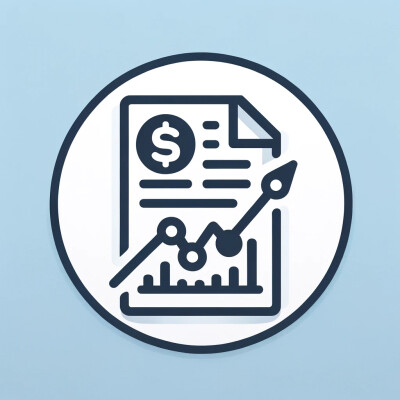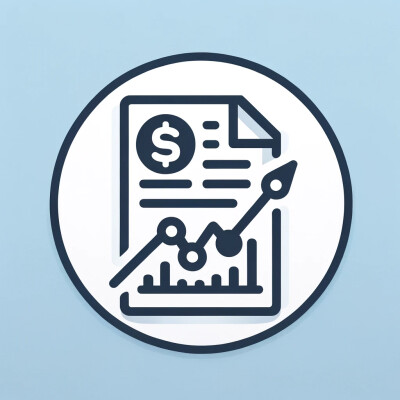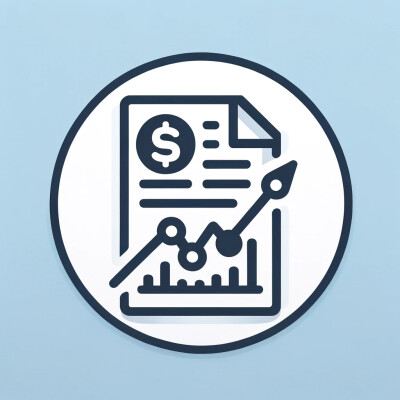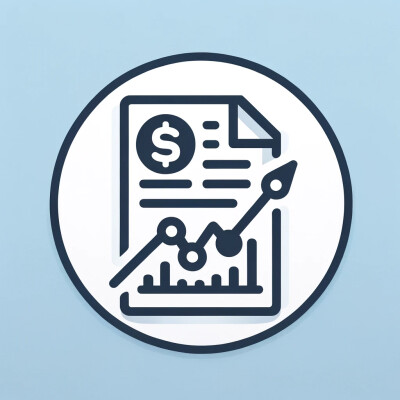- Speaker #0
Hello. Welcome back to Papers with BackTest podcast. Today, we dive into another algo trading research paper.
- Speaker #1
That's right. And this one takes a really close look at various algorithmic trading rules and importantly, their backtest results.
- Speaker #0
Exactly. So our goal today, you know, is to really understand the core logic behind the main trading rules they looked at.
- Speaker #1
And crucially, how they actually performed when tested on historical data. Yeah. What do those backtests show?
- Speaker #0
Okay. So first up, the paper digs into what they call reversal strategies. What's the basic idea there?
- Speaker #1
Well, think of it like this. If a stock price, say, makes a really big jump up or down, a reversal strategy basically bets that it's gone a bit too far, too fast, and it's due for a correction, a move back the other way.
- Speaker #0
So you're playing for that snapback, essentially.
- Speaker #1
Precisely. Betting on a temporary overreaction correcting itself.
- Speaker #0
Got it. And this paper, it looked at a specific reversal strategy using U.S. stocks, right, over quite a long period.
- Speaker #1
Yeah. They used data from 1990 all the way through to 2012. And they even broke it down into smaller chunks. Like the 90s, early 2000s? Exactly.
- Speaker #0
1999, then 2000, 2004, and 2005, 2012. To see if performance changed over time.
- Speaker #1
And what about the actual performance numbers? What did they find for that reversal strategy over the whole period?
- Speaker #0
Okay. So for one main version, they reported an average daily return of around 0.05%.
- Speaker #1
0.05% daily. Okay.
- Speaker #0
And a sharp ratio of 1.13, which, you know, measures your return versus the risk you took. Higher is generally better.
- Speaker #1
1.13 and any mention of drawdowns, the painful bits.
- Speaker #0
Yep. They reported a maximum drawdown of about minus 20.6%. So, you know, not insignificant.
- Speaker #1
Right. Okay. That gives us a baseline, but they didn't just test one flavor of reversal, did they? They looked at variations.
- Speaker #0
They did. A key thing they explored was the look back period. How much past data does the ALGO consider? Ah,
- Speaker #1
right. Like, are you looking at the last day's move or the last month's?
- Speaker #0
Exactly. They specifically compared shorter lookbacks, like two days, with longer ones, like 20 days.
- Speaker #1
And did that make much difference?
- Speaker #0
It seemed to. The paper suggested that using those longer lookback periods, like the 20-day one, well, it tended to lead to lower profitability for these reversal strategies.
- Speaker #1
Huh. Why do you think that is? Less effective if you wait longer.
- Speaker #0
Well, it could be that the kind of. inefficiencies these strategies exploit are very short-term.
- Speaker #1
Like quick overreactions.
- Speaker #0
Exactly. If you wait 20 days maybe the markets already corrected or you know other factors have taken over the opportunities gone.
- Speaker #1
Timing is everything then. Makes sense. Now what about the real world transaction costs? Did they factor those in?
- Speaker #0
Yes they did. Which is frankly essential if you want to gauge practical viability.
- Speaker #1
Couldn't agree more. What costs did they assume?
- Speaker #0
They modeled it as 10 basis points for each trade. So 10 points to get in, 10 points to get out. Okay.
- Speaker #1
10 basis points each way. And the impact, did it take a big bite out of the returns?
- Speaker #0
It definitely did. The paper showed a, well, a noticeable reduction in the profitability of the reversal strategies once you included those costs.
- Speaker #1
Right. So the raw backtest might look good, but costs can really change the game.
- Speaker #0
Absolutely. It really highlights how crucial it is to account for friction, especially for strategies that might trade pretty often. trying to catch small moves. Those costs add up fast.
- Speaker #1
A very important reality check. Okay, so moving on from reversals, the paper then looked at momentum strategies. How do they differ?
- Speaker #0
They're almost the polar opposite, really. Instead of betting on a correction, momentum trading bets that existing trends will continue. So you buy things that have been going up and you sell, or short, things that have been going down.
- Speaker #1
So you're trying to ride the wave.
- Speaker #0
Exactly. following the herd in a way assuming the direction will hold for a bit longer.
- Speaker #1
And did the paper find different performance characteristics for momentum compared to reversal over those same periods?
- Speaker #0
Oh yes. They presented backtest results from momentum strategies too, using the same US stock data and time frames. And well, the performance profiles looked quite different, as you might expect, given the opposing logic.
- Speaker #1
Interesting. Did they try mixing them, combining reversal and momentum signals? Seems a bit counterintuitive.
- Speaker #0
They did look into that. trying to see if you could get the best of both worlds perhaps.
- Speaker #1
And could you? Did combining them help?
- Speaker #0
Well, not necessarily. What they found was that simply adding, say, a momentum filter to a reversal strategy or the other way around, it didn't automatically improve things. In some cases, the combination actually made the back-tested performance worse.
- Speaker #1
Really? That's surprising. Why would that happen?
- Speaker #0
It's a bit tricky. Maybe the signals work best in different types of markets. or on different time scales.
- Speaker #1
Ah,
- Speaker #0
okay. You know, a strong reversal signal might pop up after a sharp sudden move, while momentum needs a smoother, more established trend. Combine them crudely, and maybe they just cancel each other out sometimes.
- Speaker #1
Right, they could be fighting each other. So it's not just about adding more signals, you need to understand how they actually interact.
- Speaker #0
Precisely. It's more complex than just throwing them together.
- Speaker #1
Okay. Did the paper explore any other kinds of rules beyond just stock reversal and momentum?
- Speaker #0
Yes. They touched on a few other things. For instance, industry momentum.
- Speaker #1
Industry momentum. So not individual stocks, but whole sectors.
- Speaker #0
Exactly. Looking at whether entire industries were trending up or down and trading based on that. And sometimes the results for industry momentum look different from broad market or individual stock momentum. Yeah. Sectors can have their own dynamics. Yeah.
- Speaker #1
That's another layer. And what about consistency? Were these strategies always profitable or did it vary depending on the time period?
- Speaker #0
That's a key point they investigated. By looking at those sub-periods, the 90s, early 2000s, later 2000s, they found that the performance wasn't uniform at all. A strategy that might have worked really well in, say, the 1990s might have really struggled in the 2000s or vice versa.
- Speaker #1
So performance is path dependent. depends heavily on the market environment.
- Speaker #0
It really seems that way based on their findings. It underscores that what works in one market regime might not work in another. Context matters.
- Speaker #1
Okay, so if we try and pull it all together, what are the main takeaways from looking at all these different rules and their back tests in this paper?
- Speaker #0
Well, I think a few things stand out. First, there are definite differences in risk-adjusted performance, like looking at the sharp A ratios between the reversal and momentum approaches.
- Speaker #1
Suggesting they have different risk profiles or work better in different conditions?
- Speaker #0
Exactly. Second, and this is really crucial, the results were highly sensitive to things like transaction costs.
- Speaker #1
We saw that with reversals.
- Speaker #0
Yeah. And also sensitive to the specific time period being tested. That lack of consistent performance across different decades is a big one.
- Speaker #1
So it's a strong reminder that, you know, back testing is useful, but it's not a guarantee of future results. you have have to be critical.
- Speaker #0
Absolutely. You can't just look at a headline return number from a back test. You've got to dig into the assumptions, the costs, the risks, the consistency, all of it.
- Speaker #1
This paper seems to really drive that home, the need for a nuanced view when you're evaluating these kinds of algorithm strategies.
- Speaker #0
Definitely. It highlights the importance of considering the whole picture returns, risk, costs, and how performance might change, depending on what the market's doing.
- Speaker #1
Well, this has been really insightful getting into the weeds of these different trading rules and seeing how they stack up in backtests, especially with those real-world factors like costs considered. It's vital stuff.
- Speaker #0
Yeah, the backtesting lets us analyze these ideas systematically, but we always have to keep those limitations and real-world frictions front of mind. It's a tool, not a magic wand.
- Speaker #1
Thank you for tuning in to Papers with Backtest podcast. We hope today's episode gave you useful insights. Join us next time as we break down more research. And for more papers and backtests find us at https.paperswithbacktest.com. Happy trading!






